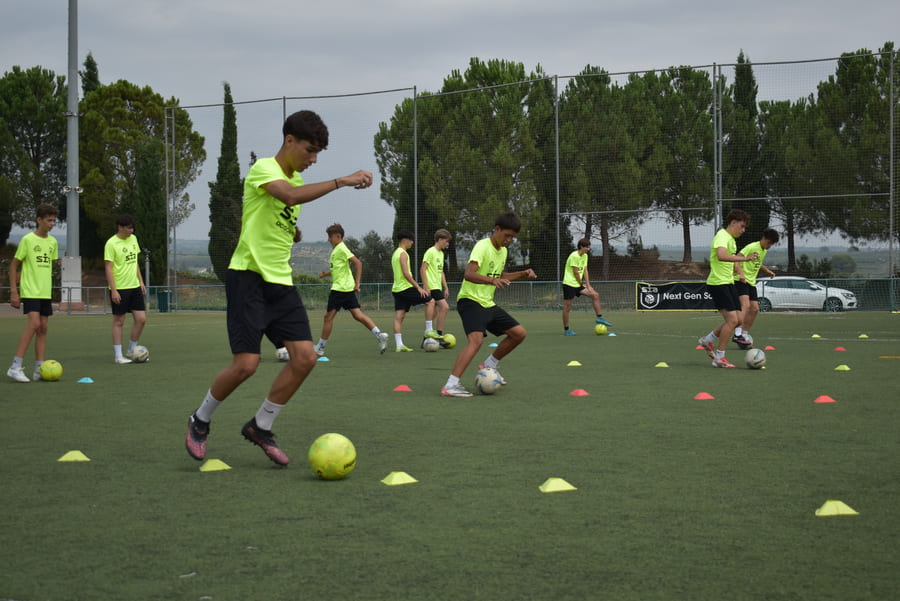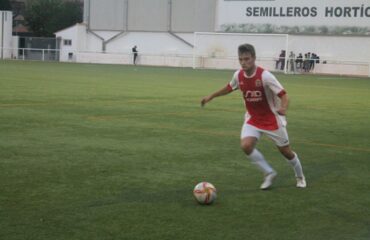In modern football, identifying the ideal role of a player within the team is just as important as training their technique or improving their fitness. Every footballer has unique characteristics that can make a difference on the pitch if they are placed in the right position. At SIA Academy, the methodology focuses on analyzing each player’s profile in detail to help them discover their most effective role and maximize it.
Table of contents
The importance of finding the right role
A team is not a sum of eleven individuals, but a mechanism in which every piece must function precisely. A player who understands their role brings security, confidence, and balance to the group. On the other hand, when a footballer does not fit into the position that best matches their abilities, collective performance can suffer.
Alain, coach at SIA Academy, sums it up like this: “It’s not about forcing a player into a position, but about discovering where they can express their talent with greater freedom and contribute to the group.”

Analysis of individual characteristics
To determine a footballer’s ideal position, different aspects are studied:
- Physical attributes: speed, endurance, strength, or agility determine in which areas of the pitch a player feels most comfortable.
- Technical skills: a footballer with great vision can shine in midfield, while one with finishing precision may be decisive as a forward.
- Tactical abilities: some players display strong game awareness, allowing them to anticipate and organize teammates from key positions.
- Mindset and character: some naturally assume leadership in defense, while others thrive under the responsibility of deciding in attack.
At SIA Academy, personalized monitoring is carried out to evaluate these factors, so each player understands their strengths and areas for improvement.
Versatility as added value
Although finding the natural place is essential, versatility has become a highly valued trait in modern football. A player who can adapt to two or three positions increases their chances of being a starter and fitting into different tactical systems.
For this reason, the academy not only defines each player’s main role, but also encourages them to perform in secondary roles. This flexibility prepares players for professional football, where coaches often seek quick, adaptable solutions.
The process at SIA Academy
Identifying the ideal position is not an immediate act but a continuous process that adjusts over time. At SIA Academy, several tools are combined:
- Physical performance tests that highlight each player’s strongest attributes.
- Specific technical sessions measuring ball control, passing, or shooting in different situations.
- Tactical video analysis, allowing observation of how a footballer reacts in different positions and game scenarios.
- Psychological work, crucial for players to embrace and trust the role that best suits them.
In this way, the academy achieves integral development where the role emerges from a combination of what the player wants and what they truly bring to the team.
The coach’s function in defining the player’s role
Coaches have the responsibility of guiding footballers toward their best version. In this sense, open communication between player and coach is essential. The athlete must understand why a role is assigned and how they can grow within it.
Alain expresses it clearly: “A coach’s greatest success is seeing how a player recognizes themselves in the role given to them and enjoys contributing to the team. That’s when true performance is reached.”

Adaptation to modern football
Today’s football demands quick decision-making, mastery of multiple skills, and a deep understanding of the game. That’s why a player’s role is no longer limited to a single label. A full-back, for example, does not just defend but also attacks; a midfielder does not only distribute but also presses and recovers.
At SIA Academy, players are trained to understand their role within different tactical contexts, enabling them to perform at their best in any system required by a professional coach.
Benefits of identifying the ideal role
When a player finds their place on the pitch, the benefits multiply:
- Greater confidence in their decisions.
- Increase in both individual and collective performance.
- Better adaptation to different coaches and playing styles.
- Faster development of natural strengths.
- Reduced frustration by avoiding positions that don’t fit their profile.
Ultimately, the footballer feels valued and motivated, two key aspects for growth in high-level sport.
Role and future projection
The ultimate goal of discovering the ideal place is not only to improve immediate performance but also to prepare the player for a solid career. Professional clubs look for footballers who know who they are on the field and what they contribute to the team.
In international academies like SIA Academy, every training session becomes an opportunity for players to confirm and reinforce their role. Finding the right role is, in many cases, the first step toward professional football.






